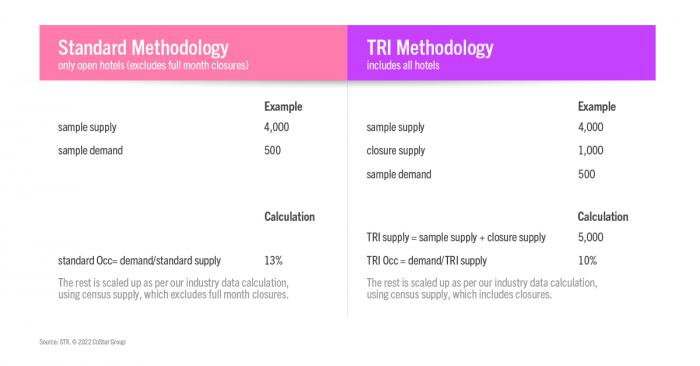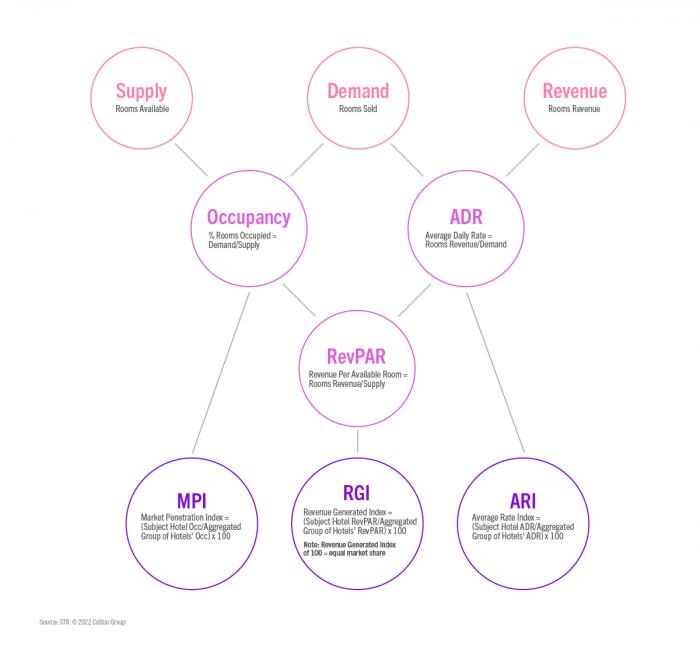Continuing this educational series on STR reports, we show the importance of taking a step back and expanding your knowledge of the market as an added tool for understanding the operating conditions around your properties. After looking at the three main KPIs, periods and percentage changes in previous pieces , we now focus on the raw data points that inform decisions in the fast-paced hotel sector: supply, demand and revenue. We also outline the various stages of the hotel pipeline, which is ever so important in investment decisions.
Hotel Supply = The number of rooms in a hotel or geographic area multiplied by the number of days in a specified time period
| Census supply = Supply derived from the number of rooms in STR's Census Database. | Sample supply = Supply derived from the number of rooms included in STR’s benchmarking participation. |
Hotel Demand = Number of rooms sold in a specified time period (excludes complimentary rooms)
Hotel Revenue = Total room revenue generated from guestroom rentals or sales
Market data is calculated by aggregating supply, demand and revenue from all open and participating hotels in that specific market/submarket that belong to the designated class/classes.
Hotels that are open but did not submit data for a specific period will be included from a supply perspective, while demand and revenue will be calculated to match KPIs for open hotels. Hotels recorded as closed for more than a calendar month will not be included in the calculation (standard methodology).
Hotel Closure – STR enters a property as “closed” if the property is closed for a full calendar month. There are temporary closures (i.e., renovation, natural disaster, pandemic, business reason, fire, etc.) and permanent closures (i.e., pandemic, business reason, fire, change of use, demolition, etc.). Full month closures will be reflected in our system, and reports show a room count of “0.” For partial month closures, supply will not be affected.
The industry data calculation uses sample data and scales up to census. That calculation is as follows:
| Industry Supply = Census Supply | Industry Occ = Industry Demand / Industry Supply |
| Industry Demand = Sample Occ * Census Supply | Industry ADR = Industry Revenue / Industry Demand |
| Industry Revenue = Sample ADR * Industry Demand | Industry RevPAR = Industry Revenue / Industry Supply |
One always needs to keep in mind that adding up markets will not equal a total country (same for submarket to market, etc.). The same is true in attempting to add classes to produce a market or submarket number.
When using total-room-inventory (TRI) methodology, the supply from both open and closed properties will be takin into consideration in the KPI calculation.

